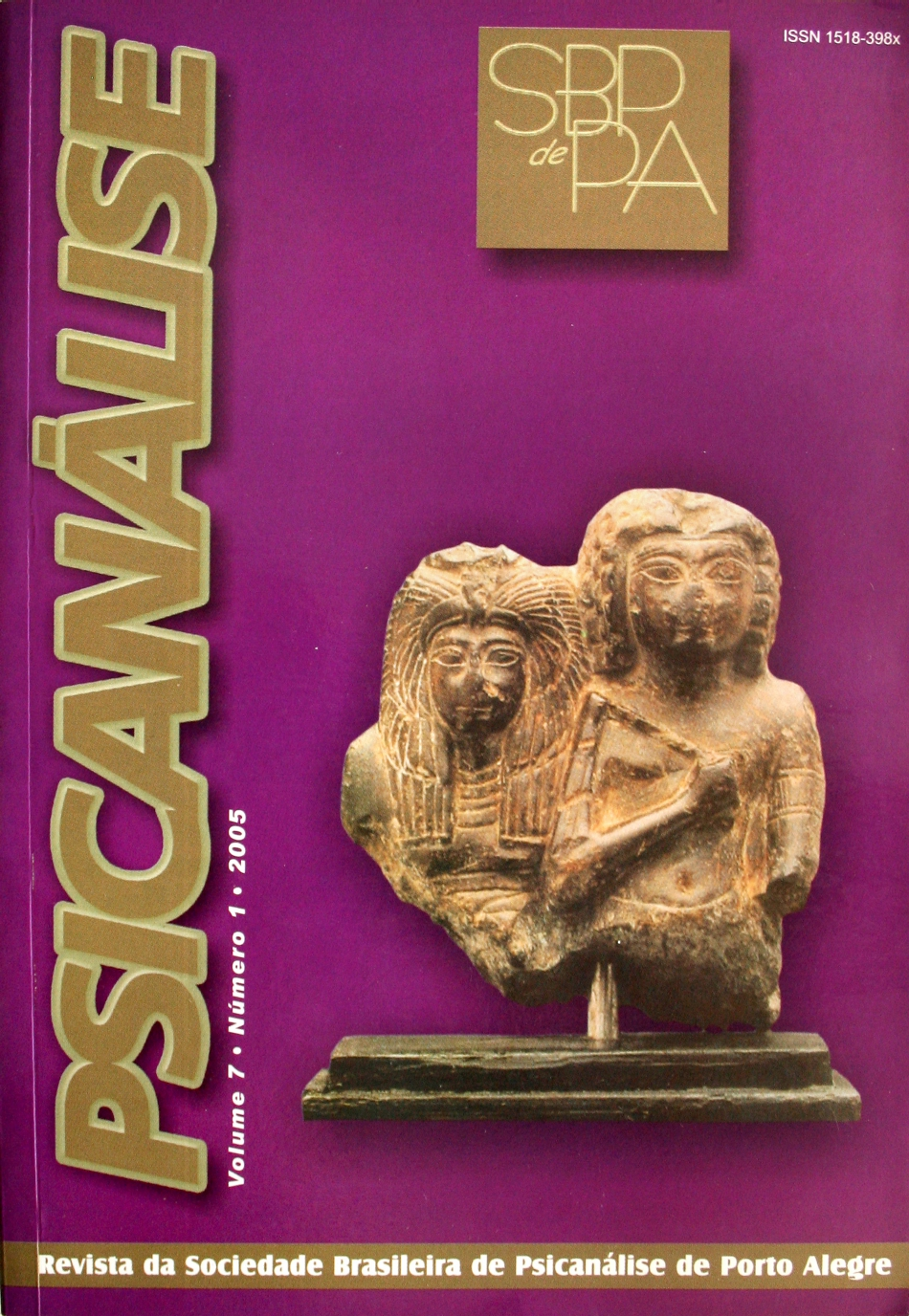Early traumatic nuclei and transgeneration
Keywords:
Trauma precocious, Object, Transgenerationality, Intersubjectivity, CountertransferenceAbstract
The Freudian model of trauma, inspired by human sexuality biphasic organization, and structured upon the oedipal scenario, could be completed, prolonged and enriched by a number of other modalities of trauma that must bequalified as early. By referring to concepts and clinical cases presented by Christian Gerard, as well as to perinatal clinical experiences, I tried to determine some specifications of such early traumas. They are mostly characterized by the prominence of psychic processes that do not carry any representation and in which the psychic subjects and objects have not yet been completely built, which in turn make the phantasmagoric scenarios rather brief. The cleavage formation processes prevail over the repression feelings, and the mutual projecting identifications prove essential for the formation of feelings. From varied psychopathological manifestations, from the object’s function, from blind spots on the transferential-countertransferential relation, and from some observations about parental duties, it is possible to isolate an early and individual traumatic nucleus. By reviewing the analysis of Pierre’s case, the child about whom C. Gérard speaks, such traumatic nucleus attracts transgenerational elements that have been barely if at all assimilated by different family members so far.Downloads
References
BION, W. R. (1961). Recherches sur les Petits Groups. Paris: PUF, 1965.
BLEGER, J. (1967). Symbiose et Ambiguïté. Paris: PUF, 1981.
BOLLAS, C. L’Objet Transformationnel. Revue Française de Psychanalyse, Paris, v.53, n.4, p.1181-1199, 1989.
DE URTUBEY, L. Le Travail de Contre Transfert. Revue Française de Psychanalyse, Paris, v.58, p.1271-1372, 1994.
FAIMBERG, H. Le Télescopage de Générations. In: KAËS, R. et al. Transmission de la Vie Psychique entre Générations. Paris: Dunod, 1993.
FRAIBERG, S. Mécanismes de Défense Pathologiques au Cours de la Petite Enfance. Devenir, Genève, v.5, n.1, 1993.
FRAIBERG, S.; ADELSON, E.; SHAPIRO, V. (1975). Fantômes dans la Chambre d’Enfants. Psychiatrie de l’Enfant, Boulogne Billancourt, v.26, n.1, 1983.
FREUD, S.; BREUER, J. (1895). Études sur l’Hystérie. Paris: PUF., 1967.
GAMPEL, Y. Violence Sociale, Lien Tyrannique et Transmission Radioactive. In: CICCONE, A. (Ed.). Psychanalyse du Lien Tyrannique. Paris: Dunod, 2003.
GRANJON, E. Mythopoïese et Souffrance Familiale. Le Divan Familial, Paris, v.4, 2000.
GUIGNARD, F. Au Vif de l’Infatile. Lausanne: Delachaux et Niestlé, 1996.
KONICHECKIS, A. Des Sens Aux Sens, Sensorialité et Signification. In: BOUBLI, M.; KONICHECKIS, A. (Ed.). Clinique Psychanalytique de la Sensorialité. Paris: Dunod, 2002.
______. Autoconservation, Sexualité, Transformation: triple fonction parentale chez le tout jeune enfant. Psychiatrie de l’Enfant, Boulogne Billancourt, v.46, n.1, 2003
LEBOVICI, S. L’Arbre de Vie. Ramonville Saint-Agne: Erès, 1998.
MELTZER, D. Le Rôle du Père au Cours du Développement Précoce. In:
MELTZER, D., WILLIAMS, H. M. L’Appréhension de la Beauté. Larmor-Plage: Éditions du Hublot, 2000.
RACKER, H. A Contribution to the Problem of Countertransference. International Journal of Psychoanalysis, London, v.34, n.4, p.313-324, 1953.
______. Contribution to the Problem of Psychopathological Stratification. International Journal of Psychoanalysis, London, v.38, n.3/4, p.223-239, 1957.
ROUSSILLON, R. Agonie, Clivage et Symbolisation. Paris: PUF, 1999.
TUSTIN, F. (1990). Autisme et Protection. Paris: Seuil, 1992.
WINNICOTT, D.W. La Crainte de l’Éffondrement. Nouvelle Revue de Psychanalyse, Paris, n.11, p.35-44,1975.
Downloads
Published
How to Cite
Issue
Section
License

This work is licensed under a Creative Commons Attribution-NonCommercial-NoDerivatives 4.0 International License.
I attribute the copyrights that belong to me, on this work, to SBPdePA, which may use and publish it by the means it deems appropriate, including on the Internet or in any other computer processing.












